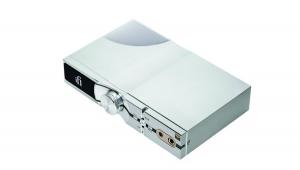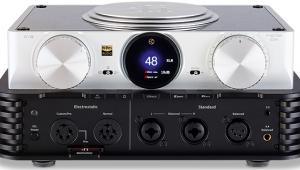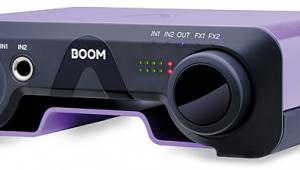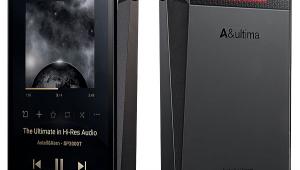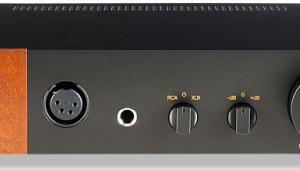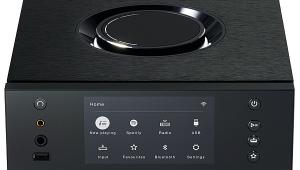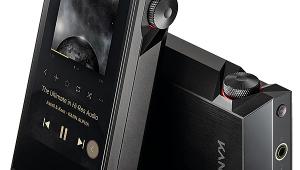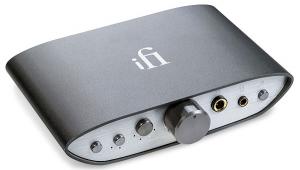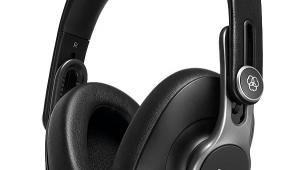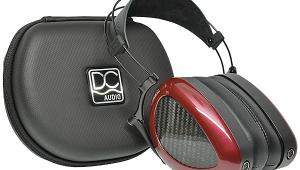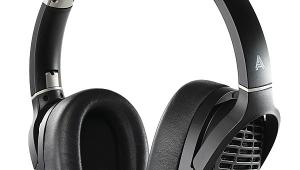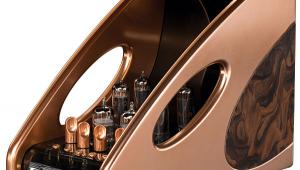Abyss AB-1266 Phi TC Headphones

 While their eye-catching aesthetics have been unkindly compared with 'Eastern Bloc, Cold War era' industrial design, these flagship cans still aim to please both head and ears
While their eye-catching aesthetics have been unkindly compared with 'Eastern Bloc, Cold War era' industrial design, these flagship cans still aim to please both head and ears
Is conventional headphone design an example of what biologists call convergent evolution – adoption of a common design solution because it's optimal – or something more akin to herd behaviour: doing it a particular way because we always have?
It's a question that thinking audiophiles will inevitably ask when presented with a product like the Abyss AB-1266 Phi TC, the more so given that this rejection of headphone design convention comes with a price tag of £4950. While Abyss's top model is not as iconoclastic as the Mysphere 3.2 [HFN Jan '20], nevertheless its unusual headband design begs an obvious question: has everyone else got it wrong or is Abyss the only boy in step?
Cyberman Style
Conventionally, headbands accommodate heads of various sizes by being curved springs, at either end of which the capsules slide in or out and rotate to fit around or on the ears. The AB-1266's headband, by contrast, is a U-shaped alloy section joined rigidly to the capsules. A wide, flat, black strap suspended between the two upright parts of the headband is attached via elastomer loops and supports the headphone on the scalp, with the flat top section of the headband above it. As our photographer pointed out, you look like a Cyberman from Doctor Who when wearing this!
The alloy headband is adjustable via a sliding joint at its centre. This allows capsule spacing to be adjusted over a range of 20mm, and permits the headband to be angled at up to 55o either way (my measurements), tilting the fixed capsules forwards or backwards.
The circumaural earpads have elliptical recesses for the ears and a wedge profile that's thicker behind the ear. Held to the inner faces of the capsules by magnets, they are located by circumferential notches (18 in total) in a thin backing plate. These engage with six stainless steel screws which hold the driver within the CNC-machined, black anodised aluminium capsule. (A further six interspersed fasteners attach the capsule back plate.) This arrangement allows the earpads to be rotated in 20o steps. But given that anthropometric studies, informing the design of the KEMAR artificial ear, record the standard deviation of ear angles as 2.8o, it's difficult to see how this can be the least bit useful in practice.
Abyss's aim in all this has been to provide a strong, vibration-free foundation for its planar magnetic (PM) drive units that's utterly devoid of flimsy plastic parts. But this raises the issue of whether it is truly free from resonance.

Abyss makes reference to 'integrated resonance control' in its description but the metal headband is quite resonant if you tap it when wearing the headset. Moreover, the frequency response traces feature a large glitch at something over 400Hz that cumulative spectral decay analysis shows to be caused by a strong high-Q resonance – almost certainly a structural resonance. And however stiff the structure, like many PM drivers, the AB-1266 shows other high-Q modes through the treble, so it cannot be considered a substantially resonance-free headphone.
Package Deals
Also unusual is the connecting cable. We were sent the 'Lite package' with the base cable set, but two other packages are available – the £5850 Deluxe and £7800 Complete – which include further accessories and superior cables. Still, the base cables are novel for having separate left/right channel runs, probably to reduce overall stiffness. If you find this arrangement awkward, a few cable ties can be used to bind the two together.
The cables are 2.5m in length, 4.5mm in diameter, have smooth sheaths to minimise mechanical noise generated by them rubbing against clothing, and are terminated with a 4-pin XLR plug for balanced operation. A 27cm adapter cable, terminated in a 6.35mm jack socket, provides for unbalanced drive. No provision is made for use with mini-jack outlets. Curiously, all connector pins are gold-plated with the exception of the 3-pin mini-XLR sockets in the base of each capsule.
Given that Abyss was an early adopter of new-generation planar magnetic drive units, it has very little to say about its drivers on the website. So I looked up the patent (US 2015/0326974 if you'd like to check it out yourself). Its principal innovation is that rather than using an array of bar magnets for the stator element, as is conventionally the case in PM drive units, a one-piece slotted neodymium magnet structure is deployed instead. The transducer arrangement is single-sided rather than double-sided, which opens up the possibility that distortion will increase at high output levels more than with other PM headphones. Nevertheless, at 90dB SPL, our tests showed distortion to be very low.
![]() Battleship Build
Battleship Build
Seemingly a world apart from the comfort and aesthetics of HiFiMan's rather more expensive Susvaras [HFN Dec '19], writes Christopher Breunig, the Abyss AB-1266 Phi TC's squarish metal frame still allows for customisation, angling and opening out for comfort, yielding a uniform head pressure around the soft, magnetically-afixed earcups.
